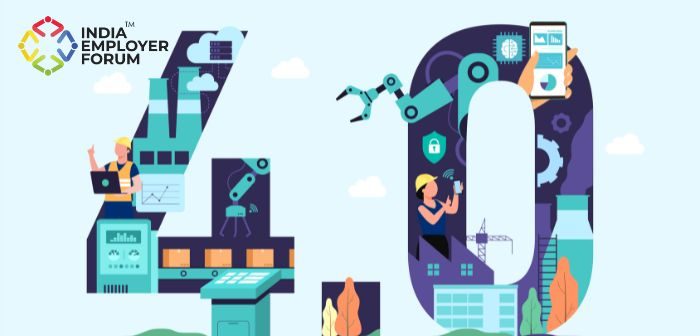The manufacturing industry is the backbone of economic growth and a key driver of innovation. However, as we stand on the brink of the Fourth Industrial Revolution, also known as Industry 4.0, the sector faces an unprecedented challenge—upskilling its workforce to keep pace with rapid technological advancements. The transition to Industry 4.0 is not merely about adopting new technologies; it necessitates a paradigm shift in how we view skills, training, and workforce development. This article delves into the critical importance of upskilling in the manufacturing industry, exploring how it can drive productivity, competitiveness, and sustainability.
Industry 4.0 represents the fusion of digital, physical, and biological systems, fundamentally altering the way industries operate. It encompasses various cutting-edge technologies, including the Internet of Things (IoT), artificial intelligence (AI), machine learning, big data analytics, robotics, and 3D printing. These technologies are revolutionising manufacturing processes by enabling smart factories, where machines and systems are interconnected, and data-driven decision-making is paramount.
According to a McKinsey report, Industry 4.0 is characterised by the integration of cyber-physical systems, smart automation, and real-time data exchange, all aimed at optimising production and enhancing efficiency. However, to harness the full potential of these technologies, manufacturers must invest in upskilling their workforce, ensuring that employees are equipped with the necessary skills to navigate this new industrial landscape.
The imperative for upskilling in manufacturing
The rapid adoption of Industry 4.0 technologies has created a significant skills gap in the manufacturing industry. Traditional manufacturing roles are being transformed, requiring workers to possess a blend of technical expertise and digital literacy. The World Economic Forum (WEF) emphasises that upskilling the workforce is essential to ensure that workers can adapt to new roles and responsibilities brought about by Industry 4.0. Failure to address this skills gap could lead to decreased productivity, increased operational costs, and a potential loss of competitiveness on the global stage.
Moreover, the shift towards Industry 4.0 is not just about technology; it is about people. Upskilling provides workers with the tools they need to thrive in a rapidly changing environment, fostering a culture of continuous learning and adaptability. This approach is particularly crucial in an era where innovation cycles are shorter, and the demand for specialised skills is ever-increasing.
Government initiatives and industry collaboration
Recognizing the critical need for upskilling in the manufacturing sector, governments worldwide have launched initiatives to support workforce development. For instance, in India, the Ministry of Skill Development and Entrepreneurship has been actively promoting skill development programs tailored to the needs of Industry 4.0. These programs aim to bridge the skills gap by providing training in emerging technologies and fostering a culture of lifelong learning.
Industry collaboration is also key to successful upskilling efforts. Manufacturers must work closely with educational institutions, training providers, and industry associations to develop curricula that align with Industry 4.0 requirements. Partnerships with technology providers can also facilitate hands-on training, allowing workers to gain practical experience with the latest tools and systems.
Challenges in upskilling the manufacturing workforce
While the need for upskilling is clear, manufacturers face several challenges in implementing effective training programs. One of the primary challenges is the rapid pace of technological change. As new technologies emerge, the skills required to operate them also evolve, making it difficult for training programs to keep up.
Another challenge is the diversity of the manufacturing workforce. Workers come from various educational backgrounds and possess different levels of technical expertise. Designing upskilling programs that cater to this diversity requires careful planning and customisation.
Additionally, there is often resistance to change among workers who may be reluctant to learn new skills or fear that automation will render their roles obsolete. Overcoming this resistance requires clear communication from management, emphasising the value of upskilling in securing long-term job security and career growth.
Strategies for effective upskilling in manufacturing
- Customised Training Programs: Tailoring training programs to the specific needs of the manufacturing workforce is essential. This includes identifying the skill gaps within the organisation and designing targeted training modules that address these gaps. Customised training programs should consider the varying levels of expertise among workers and provide opportunities for continuous learning.
- Blended Learning Approaches: Blended learning, which combines online training with hands-on experience, is an effective approach to upskilling. E-learning platforms allow workers to learn at their own pace, while on-the-job training provides practical experience with new technologies. This combination ensures that workers can apply theoretical knowledge in real-world scenarios, enhancing their overall competence.
- Mentorship and Peer Learning: Establishing mentorship programs where experienced workers guide their peers can facilitate knowledge transfer and build a supportive learning environment. Peer learning also encourages collaboration and fosters a culture of continuous improvement, as workers learn from each other’s experiences.
- Incentivizing Upskilling: To motivate workers to participate in upskilling programs, manufacturers can offer incentives such as certification, career advancement opportunities, and financial rewards. Recognising and rewarding workers’ efforts in acquiring new skills not only boost morale but also reinforces the importance of lifelong learning.
- Leveraging Technology for Training: Virtual reality (VR) and augmented reality (AR) are emerging as powerful tools for upskilling in manufacturing. These technologies provide immersive training experiences, allowing workers to practise operating complex machinery or simulating production processes in a safe environment. Leveraging such technologies can enhance the effectiveness of training programs and reduce the risk of errors on the shop floor.
The role of leadership in driving upskilling
Leadership plays a pivotal role in the successful implementation of upskilling initiatives. Senior management must champion the cause of workforce development, prioritising upskilling as a strategic imperative. This involves allocating resources, setting clear goals, and monitoring the progress of upskilling programs.
Moreover, leaders must foster a culture that values learning and innovation. By encouraging open communication and providing opportunities for feedback, leaders can create an environment where workers feel empowered to take ownership of their skills development.
The transition to Industry 4.0 presents both challenges and opportunities for the manufacturing industry. Upskilling the workforce is a critical component of this transition, enabling manufacturers to harness the power of advanced technologies and remain competitive in a rapidly changing landscape. By prioritising upskilling, manufacturers can empower their workers, drive innovation, and build a resilient and future-ready workforce.
You may also be interested in India’s Economic Future: The Untapped Potential of IT and Manufacturing Sectors
References:
- What Are Industry 4.0, the Fourth Industrial Revolution, and 4IR | McKinsey & Company
- What is ‘Industry 4.0’ and what does it mean for front-line workers? | World Economic Forum | Jan 2024
- Industry 4.0 Upskilling: Elevate Your Workforce to Prepare for Advanced Manufacturing Technology | Industry Week |July 2024




